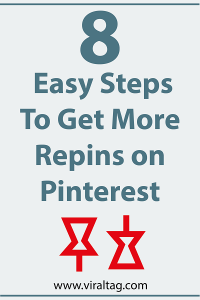The numbers have been in for quite some time now – email is the most-opened, most-preferred and highest-ROI way of communicating with your customers and prospects.
It comes as no wonder that 51% of marketers surveyed recently by SmartInsights and TFM&A pronounced email marketing as the top digital channel for 2015:

But email marketing is not “Fill it, shut it, forget it.” It has to work off a high-quality, active list of leads who want to hear from you.
Building that list is the vital first step to email marketing that converts.
What’s even better is that some of the most effective methods to grow your email list involve very little cost. Nothing’s really “free” – even if you lay out zero cash, you’re spending time and effort that could have gone elsewhere.
However, the email list building methods I discuss here involve minor, inexpensive tweaks to marketing activities you’re most likely already doing.

Socialize To Grow Your Email List
Social media can be a powerful method of growing email lists. Your social media channels are ideal places to find people who are already engaged with your brand and acquire email addresses and opt-ins without extra ad expenditure.
Twitter: Promote a lead generation offering with a Twitter campaign, pointing your twitter followers toward your ebook or whitepaper and asking for email addresses in return. This can be done with Twitter’s Promoted Tweets or Promoted Accounts, but it can be done organically too.
If you’re using lead-gen strategies anyway, building Twitter campaigns out of them doesn’t represent a significant expenditure.

Facebook: Build lead-gen offers into your timeline posts, directing friends to your landing page.
Make sure there are social sharing buttons on the landing page! That way, you have a chance of reaching friends of friends.
Better yet, create a separate tab to gather email subscriptions. A simple form builder app like 123 Contact Form will make that a breeze.

Facebook CTAs: Facebook will let you build a call to action button into your Facebook business page.
You’ll find it next to the Like and Message buttons.
Seven standard CTAs are available, including Contact Us and Sign Up. Link the CTA to a landing page that asks for an email address in return for access, perhaps integrated with lead-gen promotions.

LinkedIn: LinkedIn can be used to publish links to gated offers including white papers and ebooks either directly on your company page or in relevant conversations.
YouTube: If you use YouTube, you can add calls-to-action and URLs in your video to encourage viewers to visit your landing pages and sign up.
(If you’re not using YouTube for video marketing yet, start now! Search, social reach and the power of easily-hosted video? Why isn’t everyone all over this?)
At Home with Website Design
That means sales, sure, but sign ups too.
Websites should be designed “downhill” – as far as possible, it should be easier for a user to do what you want them to do than not.
So when you’re seeking to grow your email list, there should be CTAs and sign up opportunities everywhere.
Keep the look and feel of them as simple as possible, so they’re actually attractive to use, but make sure they’re easy to find too. Placing them in the top banner or just below is the most effective.
There should be one (and just one) on nearly every page. Most pages will benefit from several signups and several (of the same) CTAs per page.
Pay extra attention to your Home, About, Contact, and Blog pages (and every signature on your blog). Treat your blog homepage like an email capture form – because that’s what it is.
As much as the received wisdom is to make sign ups small and simple, sometimes they’re effective when they’re longer.
Hunter Boyle and Corey Post advocate experimenting with long-form signups that read like blog posts and combine social proof with a clear “What’s in it for me?” Why? “When we tried it, we saw a +321% increase in signups.”
One option to make this process more effective is to install an app like ManyContacts or CrazyEgg’s HelloBar.
When Jason Acidre tried this, he saw a +532% jump in email subscribers in one month.

These “action bars” can be instrumental in
- Collecting more email IDs, obviously
- Driving more traffic to a particular URL
- Gaining more followers on social media by pointing visitors to your social channels
Anyone who spends time on your site is demonstrating sufficient interest to become a sign up: make it easy for them!
If you run an e-commerce site, you should incorporate email signup forms into your checkout form and site registration form. Make opt-out optional and opt-in the default, but make it obvious that that’s what you’re asking for.
An email marketing suite such as GetResponse makes creating such sign-up forms and integrating it with your landing pages and drip campaigns extremely simple and inexpensive.

Finally, consider pop-ups. As much as people say they hate pop-ups, they don’t hate them so much that they don’t sign up via them in droves.
When the University of Alberta used a pop-up campaign to garner email signups, they saw a small bump in signups. OK, they saw a 500% bump.
Social Media Examiner did something similar, and they managed to lure 234% more email subscribers.
It might be worth considering exit intent pop-ups too, capturing people as they leave your website.
In Print?
The main ways to build sign up numbers through print without taking out ads or otherwise spending money are adding QRs to your print marketing, or simply adding offers to business cards, posters, flyers and other printed materials.
If you already hand out business cards, produce flyers, advertise in local presses or display posters, one or all of these strategies can be effective.
You can also collect email addresses in person or as part of signup forms on paper though you should check via an opt-in welcome email that these contacts want your emails.
QR codes: Quick Read (QR) codes are computer-generated images used to connect people directly with websites without having to type in a URL.
Users scan them with smartphones, meaning your print media can provide a direct link to the mobile consumer. These can go anywhere – business cards, yes, but also flyers, ads and even posters on bathroom doors!
Short URLS are easier to type in, but they’re never going to be able to compete with the ease and convenience of a QR code.

Printed offers: Simply adding your value proposition for sign ups to your printed materials can also be effective if you do a significant amount of offline business.
Business cards offering valuable collateral like a white paper or even simple money-off offers can produce more sign-ups.
Over to You
These methods should be easy to integrate into the marketing you’re already doing.
If you already have social channels, emails, a website and some business cards, simply making these small adjustments can rocket your sign-up rate, helping drive revenue and conversions down the line.
What are some of the free or low-cost ways you’ve grown your email list? We’d love to know! Shoot us your tips in the comments section below.
Digital & Social Articles on Business 2 Community(88)






